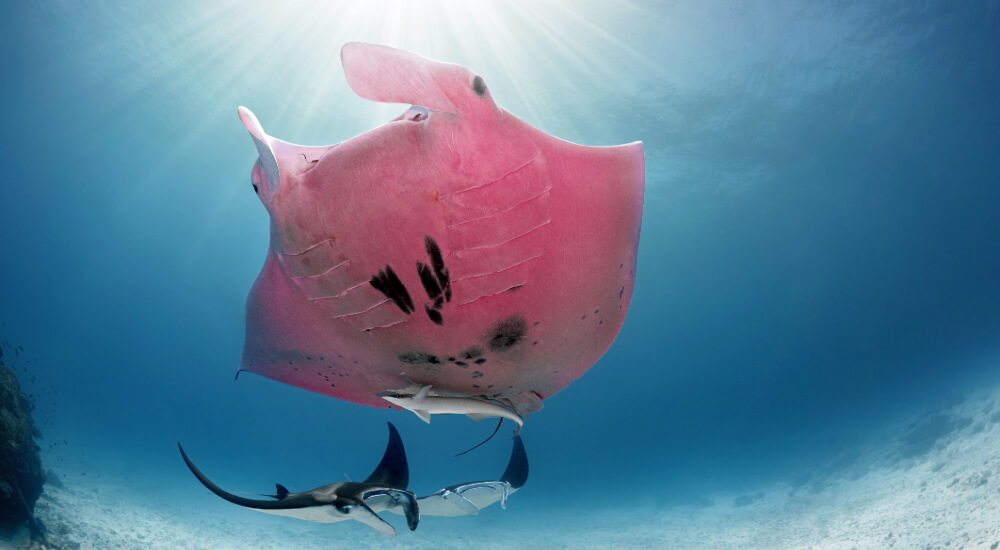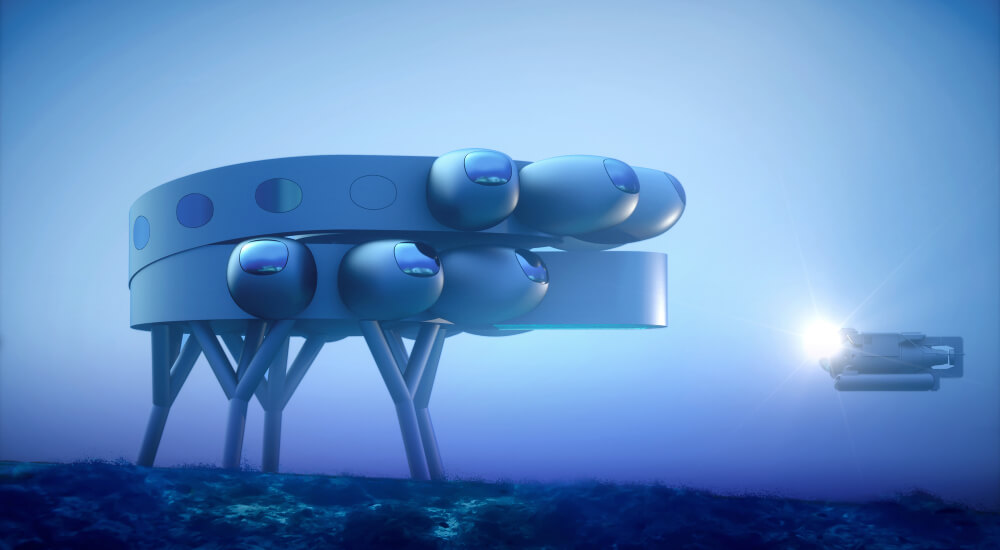Although 2020 has been overshadowed by a global pandemic that reshaped our society, there were still quite a few awesome things that happened this year. Throughout the months, we’ve kept you posted on many scuba and aquatic-related events worldwide because we like to focus on the positive. As this hectic year is coming to a close, it’s time to look back at the great news that you may have missed:
January
Palau Became the First Nation to Ban Reef-toxic Sunscreen
The Pacific nation of Palau made a big move in January by banning toxic sunscreen containing oxybenzone, octinoxate, and other eight harmful ingredients. Stores in Palau are now offering only reef-safe sunscreen. Imports of sunscreen containing eleven harmful chemicals are also prohibited.
Other nations and territories such as the Bonaire, Aruba, and the U.S. Virgin Islands have followed in Palau’s footsteps and are now encouraging the use of reef-safe sunscreen products.
Bermuda Triangle Shipwreck Discovered 95 Years after It Vanished
Mystified as an enigmatic patch of ocean where ships and aircraft disappear, the Bermuda Triangle has always been in news. This year, surprisingly, the “Devil’s Triangle” made the headlines not with another case of disappearance but with the discovery of a nearly 100-year-old ship. The SS Cotopaxi left Charleston, South Carolina for Havana, Cuba in 1925 but she never reached her destination.
The ship was discovered by a group of underwater explorers and maritime archaeologists off the coast of St. Augustine, Florida. As it turns out, it wasn’t the curse of the Bermuda Triangle that made the ship disappear but most likely a design flaw – water that washed across the deck may have leaked into the cargo hold, and the flooding could have caused the vessel to sink.
The Cayman Islands Named Caribbean’s Leading Dive Destination of 2020
The Cayman Islands have been yet again recognized as the Caribbean’s Leading Dive Destination at the first regional gala ceremony of the World Travel Awards, which took place at the end of January in Nassau. This is the 10th title in the row for the British overseas territory.
February
Deep-Sea Coral Gardens Discovered in Submarine Canyons off South Western Australia
During a month-long ocean expedition off the coast of southwestern Australia, researchers discovered deep-sea coral “gardens” in never-before-seen areas of the Bremer underwater canyon. The team, led by scientists from the University of Western Australia, used Schmidt Ocean Institute’s deep-sea ROV SuBastian to collect deep-sea corals, associated fauna, and geological samples from the abyssal depths (at approximately 4,000 meters) to the continental shelf. The findings, which revealed rich and diverse ecosystems, are helping researchers understand the canyon environment in a new light.
Rare Pink Manta Ray Spotted Near Lady Elliot Island in Australia

The rare manta ray named Inspector Clouseau was first spotted in the waters off Lady Elliot Island in 2015 and has been only seen a handful of times since then. Project Manta took a skin biopsy from the animal in 2016, and their results ruled out infection or dietary preferences as the cause of its atypical color. Researchers suspect that the manta most likely suffers from a genetic mutation that affects skin pigmentation. Such mutations are common in animals but among the manta rays, this is a first. Luckily for the cotton-candy manta, its unusual color shouldn’t get it in trouble or make it more vulnerable to predation.
March
Long-lost WWII Aircraft Discovered in Chuuk Lagoon
Pieces of three WWII aircraft that were shot down during Operation Hailstone in the Pacific Ocean were discovered in Chuuk Lagoon, part of the Federated States of Micronesia. The planes – two SBD-5 Dauntless dive bombers and a TBM/F-1 Avenger torpedo bomber – were located by Project Recover after they had been missing for 76 years. Project Recover is a nonprofit organization that works to find and repatriate Americans missing in action during World War II.
April
Bacteria found in the Mariana Trench Could Help Clean up Oil Spills
The deepest ocean trench in the world hides many life forms that are completely different from what we see closer to the surface of the sea. It is home to a unique ecosystem of creatures and microorganisms, as well as the resting place for a number of man-made pollutants.
According to a study published in the journal Microbiome in April this year, a group of bacteria that resides in this cold and dark place can eat the hydrocarbon molecules found in everyday crude oil and natural gas. Oil-eating bacteria like these are also found on the surface of the ocean; after the 2010 Deepwater Horizon disaster, they helped degrade much of the oil that spilled into the Gulf of Mexico.
May
New Species of Seahorse Discovered in the Waters of Sodwana Bay, South Africa

Seahorses are threatened all around the world and many species are at risk of becoming extinct. Knowing this, when researchers discovered a new species of seahorse the size of a little finger, the joy was even greater. Hippocampus nalu, as the tiny seahorse was named, grows to a maximum size of just 2 cm. This is the first pygmy seahorse to be discovered off the African continent and in the Indian Ocean. Its relatives are found thousands of kilometers away in the Pacific Ocean.
June
Greece Announced It Would Open Ancient Shipwrecks for Scuba Diving
Until recently, those who attempted to dive some of the archeological sites and historical wrecks off the coast of Greece were faced with hefty fines. The stringent regulations were lifted this summer to encourage the return of international tourists.
The two sites are located on the Sapientza islet, opposite Methoni town and in Navarino Bay in southwestern Messinia. One of the shipwrecks, dubbed “shipwrecked of the sarcophagi,” dates to the 3rd century AD and it has a cargo of intact sarcophagi made of andesite stone from the ancient city of Assos.
July
“Alien-like” Creature Discovered on the Pacific Seafloor Gets a Name

The peculiar animal has been classified as a new species and genus of sponges. The creature was first spotted in 2016 in what researchers at the National Oceanic and Atmospheric Administration called a “Forest of the Weird.”
What stood out to the team was a sponge that had a body with two holes reminiscent of the large eye of the alien from the E.T. movie. Three years after the discovery, the sponge finally got a name: Advhena magnifica. Advhena is Latin for “advena,” which means alien, but in the sense of visitor or foreigner.
“Darth Vader” Aquatic Cockroach Discovered in the Indian Ocean Gets a Name
This summer, another peculiar animal discovered at the bottom of the Indian Ocean in 2018 finally got a name. The 14-legged creature was discovered off the coast of Banten, Western Java, Indonesia by a team of researchers from Indonesia. The giant isopod is a crustacean that resembles a cockroach but is in fact more related to shrimps and crabs.
The animal has a head and compound eyes that resemble the helmet worn by the villainous Sith Lord in the series Star Wars. Researchers named the new species – that is now the second-largest isopod species known to science, Bathynomus raksasa. The finding goes to show that Indonesia’s great biodiversity has yet to be fully unraveled.
August
30 New Species of Marine Life Discovered in Galapagos Depths
Dozens of deep-sea creatures were discovered this year by marine scientists exploring the deepest parts of the ocean surrounding the Galapagos Islands. Among these were ten species of bamboo coral, four types of lobsters, three species of octocorals, and a new species of giant cup coral.
The research was conducted by a multidisciplinary and comprehensive team of scientists from the Ocean Exploration Trust, the Charles Darwin Foundation, and the Galapagos National Park Directorate. Scientists used remote operated vehicles to reach depths of up to 3,400 meters. The exploration also unveiled a series of underwater communities such as coral gardens and crystal sponge gardens.
Australia Opened Its First Underwater Museum
After months of delay caused by the current global pandemic, the Museum of Underwater Art (MOUA) of Australia finally opened two of its installations: Coral Greenhouse and Ocean Siren. The first installation consists of a 64-ton art piece with a 40-foot skeletal structure that houses 20 sculptures cast from school children that study and tend to coral. The latter is a 4.8-meter-tall “siren” modeled on Takoda Johnson that looks over the land of her forefathers and reacts to live water temperature data from the nearby weather station.
September
Fabien Cousteau’s Sci-Fi Underwater Research Habitat Revealed

Fabien Cousteau, the grandson of renowned conservationist Jacques Cousteau, announced his ambitious project called Proteus. Named after the shape-shifting Greek god whom Homer calls the “Old Man of the Sea,” the research lab is expected to give rise to scientific breakthroughs in many different fields, including ocean conservation and sustainable energy. The habitat will be submerged in a protected area off the coast of Curacao and will allow up to 12 people to remain underwater for up to 31 days.
Artist Designs New Coral Reefs Using VR
Socio-ecological artist Colleen Flanigan has come up with a unique way to raise the general population’s awareness about environmental matters. Flanigan creates metal structures that are then placed underwater to become living reefs. Afterward, she develops them in the virtual space using Google’s Tilt Brush app. Using the app, she can also populate the virtual reefs with other marine life such as fish and coral colonies. Through her work, the artist also hopes to raise humans’ sensitivity to other species and our interdependence.
3D-printed Terracotta Tiles Used to Rejuvenate Coral Reefs
Architects from Hong Kong University’s Robotic Fabrication Lab and marine scientists from the Swire Institute of Marine Science are now using 3D-printed clay hexagons to create artificial reefs following the devastating 2018 typhoon that destroyed most of the corals at Hoi Ha Wan bay in Hong Kong. This is reportedly the first use of clay in 3D printing as well as the first use of terracotta in creating artificial reefs. The design of the tiles was inspired by patterns typical to corals and contain ridges and indentations that mimic the environments where coral reefs occur naturally.
October
Scientists Discovered a 500-meter Tall Coral Reef
The vast Great Barrier Reef still holds many mysteries, as scientists from the Schmidt Ocean Institute recently discovered. During an expedition aboard the research vessel Falkor, the team set eyes on a detached coral reef, the first of its kind to be discovered in 120 years.
The pinnacle of coral was first found on October 20 in the offshore Cape York area, in Far North Queensland. Taller than the Eiffel Tower and with a 1.5-kilometer-wide base, the reef is estimated to be around 20 million years old. Isolated seamounts like this are considered critical habitats for marine life.
Elusive Squid Seen Alive in Its Natural Habitat for First Time
In the fall, researchers captured rare footage of a tiny deep-sea squid swimming near the Great Barrier Reef. The animal is the only living member of its genus and has never been observed alive in its natural habitat. Named ram’s horn squid (Spirula spirula), the creature swims in an unusual vertical position with its arms and tentacles pointed up. The researchers at the Schmidt Ocean Institute spotted the squid using their remote ROV while mapping the northern Great Barrier Reef off the coast of Cape York.
November
New World Record for Longest Open Saltwater Scuba Dive
A 29-year-old Egyptian diver named Saddam Al-Kilany emerged from the waters of the Red Sea after having spent six days underwater to set a new world record for the longest open saltwater scuba dive. The diver went underwater at The Lighthouse dive site in Dahab on November 5 and remained there for 145 hours and 30 minutes. An underwater “bed” was designed for him to rest on. The diver passed his time under the sea by praying, painting, and practicing underwater chess and other games.
Poland Opened World’s Deepest Swimming Pool
Aptly named “Deepspot,” the swimming pool has a maximum depth of 45.4 meters and is filled with 8,000 cubic meters of water. The pool includes a huge underwater tunnel, reproductions of underwater caves and Mayan ruins, as well as a small shipwreck.
The facility was designed as a place for divers to learn and train before attempting an open water dive. Underwater, divers enjoy a pleasant temperature that eliminates the need for a wetsuit as well as outstanding visibility.
December
The Philippines Named World’s Leading Dive Destination in 2020
The Philippines has recently been named World’s Leading Dive Destination of 2020 by the World Travel Awards. The island nation bested eight strong contenders such as the Azores Islands, Bora Bora, Cayman Islands, Fiji, Galapagos Islands, the Great Barrier Reef, Mexico, and the Maldives. In addition to this major award, the Philippines snatched another important distinction within the diving world; the 5-star Amanpulo Luxury Resort on Pamalican Island won the title of World’s Leading Dive Resort in 2020.
18th-century Warship Discovered on the Bottom of the Aegean Sea
A warship believed to have sunk approximately 250 years ago was recently discovered off the town of Foça in the İzmir province of Turkey. About 20 iron and bronze cannons, as well as many cannonballs and pieces of sailing equipment, were found on it. Wood parts and Italian and Ottoman kitchenware were also discovered on the sea bottom.
The ship’s origin and purpose remain unknown, but researchers believe that it may have sunk following a conflict in the area between the Ottoman Empire and Italy. Foça used to be an important naval base during the Ottoman era, which lasted from the 14th to the early 20th century. Researchers hope that the vessel will provide further insight into the history of the area.
We hope you have enjoyed our (positive) retrospective of 2020. Did we miss any other exciting news? Leave us a comment below.
